Ming Xie9812383131, 9789812564825, 9789812383358, 9789812383136, 9812383352
Tomorrow’s robots will be the most exciting and revolutionary things to happen to the world since the invention of the automobile. It will change the way we work, play, think, and live. Because of this, nowadays robotics is one of the most dynamic fields of scientific research. These days, robotics is offered in almost every university in the world. Most mechanical engineering departments offer a similar course at both the undergraduate and graduate levels. And increasingly, many computer and electrical engineering departments are also offering it.
This book will guide you, the curious beginner, from yesterday to tomorrow. The book will cover practical knowledge in understanding, developing, and using robots as versatile equipment to automate a variety of industrial processes or tasks. But, the book will also discuss the possibilities we can look forward to when we are capable of creating a vision-guided, learning machine.
Table of contents :
Preface……Page 8
Contents……Page 14
1.2 Manufacturing……Page 26
Processes……Page 28
Factories……Page 29
1.3 Factory Automation……Page 30
1.3.1 Automation and Robots……Page 32
1.4 Impact of Industrial Robots……Page 35
1.5.2 Society……Page 39
1.5.4 Education……Page 42
1.5.5 Research……Page 43
1.6.1 Mechanism and Kinematics……Page 46
1.6.2 Actuation Elements and Dynamics……Page 47
1.6.5 Information and Decision-Making……Page 48
1.6.6 Visual Perception……Page 49
1.8 Bibliography……Page 51
2.2 Cartesian Coordinate Systems……Page 52
2.3 Projective Coordinate Systems……Page 54
2.4 Translational Motions……Page 55
2.4.1 Linear Displacement……Page 56
2.5 Rotational Motions……Page 59
2.5.1 Circular Displacement……Page 60
2.5.2 Circular Velocity and Acceleration……Page 63
2.6 Composite Motions……Page 65
2.6.1 Homogenous Transformation……Page 66
2.6.2 Differential Homogenous Transformation……Page 68
2.6.3 Successive Elementary Translations……Page 71
2.6.4 Successive Elementary Rotations……Page 74
2.6.5 Euler Angles……Page 77
2.6.6 Equivalent Axis and Angle of Rotation……Page 78
2.8 Exercises……Page 82
2.9 Bibliography……Page 83
3.2.1 Links……Page 84
3.2.2 Joints……Page 88
3.2.3 Kinematic Chains……Page 89
3.2.4 Multiplicity of an Open Kinematic-Chain……Page 92
3.3 Robot Kinematics……Page 94
3.3.1 Kinematics of a Link……Page 96
3.3.2 Forward Kinematics of Open Kinematic-Chains……Page 105
3.3.3 Inverse Kinematics of Open Kinematic-Chains……Page 111
3.3.4 Discrete Kinematic Mapping……Page 129
3.4 Summary……Page 135
3.5 Exercises……Page 137
3.6 Bibliography……Page 138
4.2 Origin of a Rigid Body’s Motion……Page 140
4.2.1 Energy Conservation in a System……Page 141
4.2.2 Forces……Page 142
4.2.3 Torques……Page 144
4.2.4 Dynamic Pairs and Chains……Page 145
4.2.5 Incremental Works……Page 147
4.2.6 Potential Energy……Page 148
4.2.8 Origin of Motions……Page 149
4.3 Actuation Elements……Page 150
4.3.1 Force and Torque Generators……Page 151
4.3.2 Force and Torque Amplifiers……Page 164
4.4 Formation of a Robot’s Electromechanical System……Page 169
4.4.1 One-to-One Couplings……Page 170
4.4.2 One-to-Many Couplings……Page 172
4.4.3 Open Kineto-Dynamic Chains……Page 179
4.5 Robot Statics……Page 180
4.5.1 Dynamic System of Particles……Page 181
4.5.2 Generalized Coordinates and Forces……Page 182
4.5.3 Constraints of a Dynamic System……Page 183
4.5.4 Virtual Displacements……Page 185
4.5.6 Principle of Virtual Work for Statics……Page 186
4.5.7 Statics Against Self-Inertial Loads……Page 187
4.5.8 Statics Against Inertial Loads at End-effector……Page 189
4.6 Robot Dynamics……Page 190
4.6.1 Dynamic System of Rigid Bodies……Page 191
4.6.2 Dynamics of a Rigid Body……Page 192
4.6.3 Newton-Euler Formula……Page 199
4.6.4 Euler-Lagrange Formula……Page 207
4.7 Summary……Page 219
4.8 Exercises……Page 220
4.9 Bibliography……Page 222
5.1 Introduction……Page 224
5.2.1 System Concept……Page 225
5.2.2 Closed-loop Control Scheme……Page 226
5.2.3 System Dynamics……Page 229
5.2.4 Transfer Functions……Page 231
5.2.5 System Performance……Page 234
5.2.6 Analysis of Absolute Stability……Page 238
5.2.7 Tuning of PID Control Algorithms……Page 242
5.3 Control Elements……Page 246
5.3.1 Power Switches……Page 248
5.3.2 Power Drives……Page 255
5.3.3 Digital Motion Controllers……Page 262
5.4 Sensing Elements……Page 264
5.4.1 Generic Sensing Principle……Page 265
5.4.2 Safety Sensors……Page 267
5.4.3 Motion Sensors……Page 271
5.4.4 Force/Torque Sensors……Page 283
5.4.5 Tactile Sensors……Page 289
5.5.1 Issues……Page 291
5.5.2 Planning of Desired Outputs……Page 292
5.5.3 A Robot’s System Dynamics……Page 293
5.5.4 Sensory Feedback……Page 299
5.5.5 Control Algorithms and Performances……Page 301
5.5.6 Joint-Space Control……Page 308
5.5.7 Task-Space Control……Page 315
5.5.8 Image-Space Control……Page 322
5.6 Summary……Page 324
5.7 Exercises……Page 326
5.8 Bibliography……Page 327
6.1 Introduction……Page 328
6.2 Imitating the Brain……Page 329
6.3.1 Autonomous Actors or Agents……Page 331
6.3.2 Autonomous Behaviors……Page 332
6.3.3 Computational Tasks……Page 334
6.4 Data-Processing Hardware……Page 335
6.4.1 Digital Computers……Page 336
6.4.2 Microprocessors……Page 337
6.4.3 Micro-controllers……Page 346
6.5 Data-Processing Software……Page 347
6.5.1 Programming……Page 348
6.5.2 Multi-Tasking……Page 359
6.5.3 Real-Time Operating Systems……Page 367
6.6 Data Storage and Retrieval……Page 368
6.6.2 A File System……Page 369
6.6.3 Data Storage Using Unformatted Files……Page 370
6.6.4 Data Storage Using a File System……Page 371
6.6.5 Data Storage Using Formatted Files……Page 372
6.7.1 Basic Concepts……Page 374
6.7.2 D/A Converters……Page 379
6.7.3 A/D Converters……Page 380
6.7.4 Parallel I/O……Page 382
6.7.5 Serial I/O……Page 386
6.7.6 Programmable Timers……Page 396
6.8 Summary……Page 399
6.9 Exercises……Page 401
6.10 Bibliography……Page 402
7.2 The Basics of Light……Page 404
7.2.1 Physical Properties……Page 405
7.2.2 Geometrical Properties……Page 411
7.2.3 Refraction of Light Rays by a Thin Lens……Page 414
7.3.1 Eyeballs……Page 417
7.3.2 Photosensitive Cells……Page 419
7.3.3 Central Vision……Page 420
7.4 Digital Image Acquisition……Page 421
7.4.1 Formation of Optical Images……Page 422
7.4.2 Formation of Electronic Images……Page 429
7.4.3 Formation of Digital Images……Page 441
7.5.1 Chromatic Modelling……Page 451
7.5.2 Geometric Modelling……Page 453
7.6 Digital Image-Processing Hardware……Page 460
7.6.2 DSP Processors……Page 461
7.6.3 Pipelined Computing Modules……Page 463
7.6.4 Parallel Computing Platforms……Page 464
7.7 Summary……Page 466
7.8 Exercises……Page 467
7.9 Bibliography……Page 469
8.1 Introduction……Page 470
8.2.1 A Process of Visual Perception……Page 471
8.2.2 Attributes of Visual Perception……Page 472
8.2.3 Applications of Visual Perception……Page 473
8.2.4 Information Processing in Visual Perception……Page 475
8.3.1 Image Transformation……Page 478
8.3.2 Image Filtering……Page 482
8.4.1 The Basics of Feature Detection……Page 490
8.4.2 Edge Detection……Page 496
8.4.3 Corner Detection……Page 514
8.4.4 Spatial Uniformity Detection……Page 521
8.4.5 Temporal Uniformity Detection……Page 533
8.5 Geometric-Feature Description……Page 538
8.5.1 The Basics of Feature Description……Page 539
8.5.2 Feature Grouping……Page 540
8.5.3 Contour Splitting……Page 547
8.5.4 Curve Fitting……Page 550
8.6 Geometry Measurement……Page 554
8.6.1 Monocular Vision……Page 555
8.6.2 Binocular Vision……Page 571
8.7 Summary……Page 591
8.8 Exercises……Page 593
8.9 Bibliography……Page 595
9.1 Introduction……Page 598
9.2.1 The Key to Automated Actions……Page 599
9.2.2 The Key to Automated Behaviors……Page 600
9.2.3 Decision-Making Processes……Page 601
9.2.4 Difficulties in Decision-Making……Page 605
9.2.5 Methodologies in Decision-Making……Page 607
9.3 Decision Making for Autonomous Behaviors……Page 613
9.3.1 Task or Scenario Planning……Page 614
9.3.2 Action or Behavior Planning……Page 617
9.3.3 Motion Planning……Page 621
9.3.4 A General Framework for Automated Planning……Page 625
9.4 The Basics of Motion Planning……Page 627
9.4.1 Path and Trajectory……Page 628
9.4.2 Motion-Planning Strategy……Page 629
9.5 Motion Planning in Task Space……Page 635
9.5.1 Planning of Collision-Free Paths……Page 636
9.5.2 Motion Description……Page 643
9.6 Image-Guided Motion Planning and Control……Page 651
9.6.1 Hand-Eye Coordination……Page 654
9.6.2 Head-Eye Coordination……Page 669
9.6.3 Leg-Eye Coordination……Page 685
9.7 Summary……Page 692
9.8 Exercises……Page 694
9.9 Bibliography……Page 695
Towards a Sociable Robot……Page 698
Behavior Development and Learning……Page 699
Real-time Visual Perception……Page 700
Promising Future……Page 701
Index……Page 702
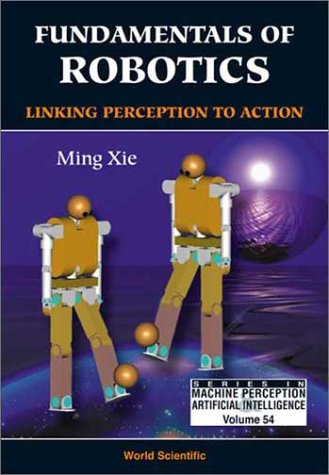
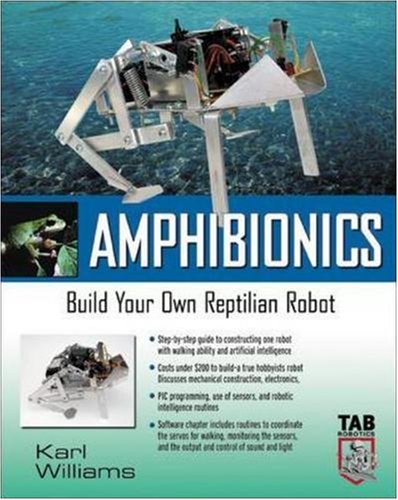

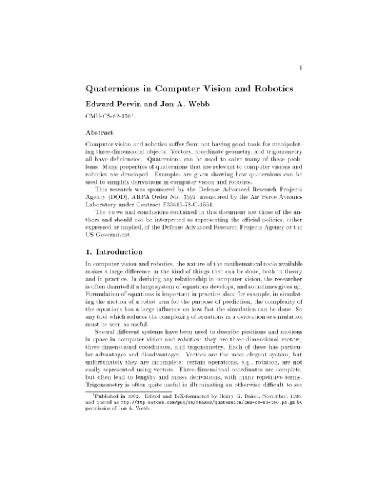

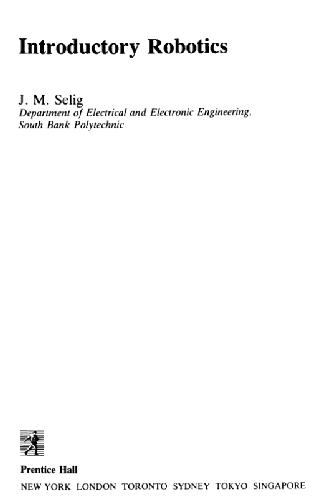
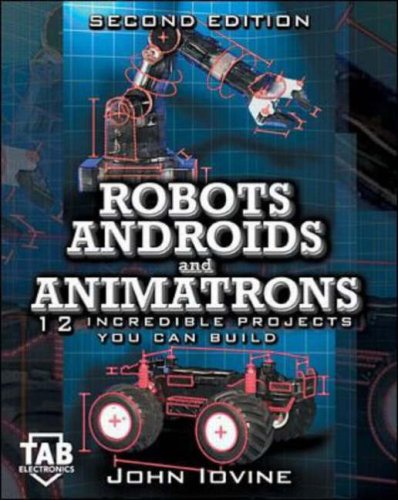
Reviews
There are no reviews yet.